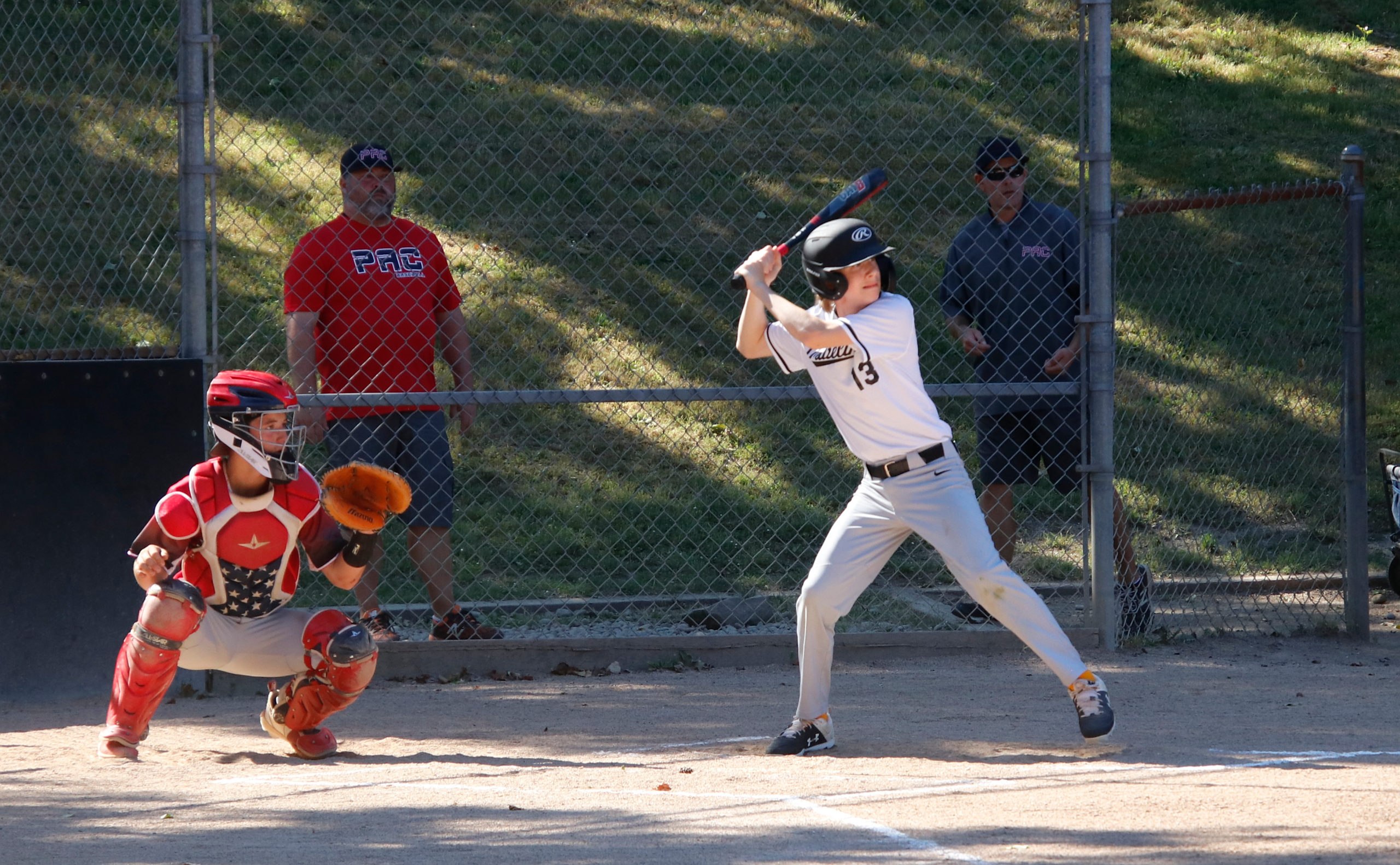How to Help a Hitter Who is Too Early

Written by Chase Glaum
Being too late is a common issue for hitters at all levels. Hitting coaches are always trying to find the perfect rhythm and timing for each individual hitter. With pitchers today having nastier stuff and throwing harder than ever before, solving the timing issue can seem impossible at times.
But what happens when a hitter appears to be too early instead of too late?
Question
“My 15u son has a tendency to load slightly too early and then starts to come out of the load a little too early before starting to swing, thus robbing him of some power. He is a right-hand throwing, left-handed hitter, which I think tends to make it worse as these types of hitters tend to be bottom hand dominant and pull their bat across the swing with a less vertical bat path than ideal. Wondering about suggestions of drills to help with loading later and not coming out of load too early?”
Bat sensors and/or HitTrax or Rapsodo are great tools for looking at swing flaws, but I prefer to look at video for timing issues. Looking at video of this hitter will help me determine whether the issue is timing or something else.
If the hitter is loading early which is then causing him to come out of his load and—I assume—into early hip extension, then it could be a strength issue; the hitter may not be able to hold the load position, so the hitter’s body will want to come out of that position quickly.
That said, sometimes it doesn’t matter how strong the hitter is; holding a position through a dynamic movement is difficult, so strength can be negated when swinging a bat.
If I were working with the player above, I wouldn’t start by changing the load or timing. I’d see if we could first help him avoid early hip extension, while also giving him different drills that will force him to optimize his timing.
Drills
Step backs – This drill will help not only with timing but will also accentuate early hip extension.
Feet together, stride away – Since the step backs will (most likely) get the hitter into early hip extension, this will help with the timing and the stride.
Offset Open – Focus on not coming out of the posture (hinge) in this stance, as most hitters with early hip extension tend to stand straight up to swing when they are put in this position. This will also allow his torso to rotate freely, which can help bottom hand dominant hitters.
Hook ‘em – This will help him keep his hinge during the stride. It can also help with timing and rhythm.
As with any new drill, it could take some time for these drills to effect change in a hitter’s swing, so we recommend continuing them for 3-4 weeks at least.
You can do them off a tee, front toss, machine or all three. The reps can be up to the coach or hitter but my recommendation would be at least two sets of 8 for each drill.
I also recommend doing them in that specific order because of the way the drills are set up—there is a drill feeding the mistake followed by a drill correcting it.
*I would HIGHLY recommend using different weighted bats/length of bats during these drills.*
Comparison
This particular hitter reminded me of Freddie Freeman, so I compared the two swings side by side at certain phases.
In the first segment, he has shifted almost all of his weight onto his front leg. When that happens, timing can be drastically altered, because essentially everything else has to start moving towards the ball if all the weight is on the front side that early in the swing.
In the second segment he is already starting to come out of his hinge (early hip extension), and he hasn’t firmed up the front side yet, which will lead him to rotate around his front leg as opposed to the center of his body.
In the third segment, his torso and hands are shown in relation to the plane of the pitch. In this position it will be hard to drive the ball on a line consistently because everything is going forward, rotating around the front leg and causing his hands/bat path to be steep due to coming up out of his hinge/posture.
The fourth segment shows his finish, which isn’t bad but also shows how the finish of a swing can trick the eye, causing a viewer to overlook the rest of the swing. In other words, a strong finish can distract an observer from earlier parts of the swing that could be improved.
This is definitely a strong kid and the drills I mentioned above will likely help him to train the strength he already has so that he can use it to hold these tough positions throughout the swing.
I really like the makings of his swing. There is a lot of pop and power that he has yet to tap into.
Comment section
Add a Comment
You must be logged in to post a comment.
e.lindsey -
So start with step backs and end with HookEm? Should we add regular swings to blend with ? What do you mean by feed the problem? That’s so interesting